In many parts of the world, and in Africa especially, traditional leaders can hold a great amount of power in communities especially when it comes to influencing social norms. They remain important ‘gatekeepers’ who play a vital role in passing on ideas and information to communities. Social norms around gender can be very ‘sticky’ and difficult to change so finding a way to work with traditional leaders can be valuable.
Below is a synthesis of ideas for researchers and practitioners planning to work with traditional leaders to implement gender transformative approaches to WASH. A key source for this blog was Helen Lungu (Gender Specialist, Plan International Zambia) who has been doing excellent work with traditional leaders to change restrictive gender norms around WASH in Zambia. Watch an extract of Helen’s interview here. The workshop ‘Gender Transformative WASH’ facilitated by Dr Sue Cavill for Plan International Netherlands in April 2019 (with support from the Sanitation Learning Hub), was also a key inspiration.
To start, pay a courtesy call to the chief
Gathering local stories and solutions on gender and WASH issues can be a good starting point for working with a traditional leader, however, before gathering any information in a chiefdom you generally need to pay an initial courtesy call to a chief to explain your programme. Helen mentioned that in Zambia to set up a courtesy meeting with a traditional leader you need to ‘climb the ladder of hierarchy’ in your programme area, which involves meeting with various people who take you a step closer to the leader. Set some time aside for this as it can take a while!
Gather local stories and solutions
Once a traditional leader has approved your presence in the area, find out as much as you can about local people’s lived experiences on gender and WASH. These stories will be used to engage and inform the leader when you meet them formally.
For example:
- Collect individual’s stories and/or collective case studies, which define the various gender and WASH issues. Document these stories and synthesise them into priority issues. If the stories are sensitive, get consent around sharing individual’s identities, as they may prefer to remain anonymous.
- Using a mix of media types can be powerful, for example, photos, short video clips, audio interviews, songs, along with text. If they are gathered using participatory processes this can add extra layers of depth and power to the work.
- Work with local people to come up with some suggestions for how these issues could be addressed in a transformative way. Build a convincing argument with local people as to why things need to change and how they could.
Make use of traditional leader strategy documents and local statistics
Helen reflected that in Zambia many traditional leaders are educated to graduate level and beyond and have a good understanding of development issues. They often have easy access to data and statistics on their community, chiefdom or kingdom.
In Zambia, the Ministry of Chiefs and Traditional Affairs looks at how to engage the traditional leaders and how they can work together. The Ministry has created a strategy document on traditional leaders’ engagement, which talks about, for example, how traditional leaders should network with all the other organisations and ministries that have presence in their chiefdom. It also sets out how ministries should support traditional leaders to roll out their agenda.
Chiefs also have ‘Chiefdom Development Strategies’, which have been developed in a holistic manner with all the ministries involved. Within this strategy, they will have a water and sanitation element, as well as a gender equality element. Where they exist, it would be valuable to read these documents in advance to help contextualise your case to the leader.
Present local information gathered (that they are often missing)
Here are a few tips for when you get a formal meeting with a traditional leader:
Discuss gender and WASH statistics in their region – most chiefs have access to this. For example:
- Statistics on girls’ school attendance aged 12 and older are linked to girls’ access to sanitary products and WASH facilities;
- Violence against women and domestic violence can be heightened by limited access to WASH facilities.
- Men and boys engagement in sanitation and hygiene programming
You could then highlight gaps in their information and statistics on key gender and WASH issues.
Find out what is blocking them from addressing certain gender norms and WASH issues in their area; they might just need some motivation or maybe there is information that they don’t fully understood. Your research and case studies can help provide this essential information and motivation.
Present and discuss the local stories you have gathered around restrictive gender norms and WASH to the leader. Explain the impact that these issues are having. People’s stories can be very powerful – most traditional leaders care about the people in their communities. Helping a traditional leader to get a clearer picture of certain issues in their constituency can sometimes be enough motivation for them to ‘buy in’.
Support them in finding solutions. Helen says: ‘Once we have buy-in I say, “Ok how do you think you are going to do it? I will leave it up to you – find your own ways of doing that and let me know if you are stuck.” And in most cases, they will call back before you even leave their palace and ask, “When are you coming back so that you can take us through the process of identifying these things”.’
If you get this buy-in from the leader this is a great opportunity to present gender transformative WASH ideas and solutions developed with the community. Also talk about how a gender transformative approach is used to change other issues governed by harmful gender norms, for example, female genital mutilation (FGM), forced and early marriage – and discuss how can you link gender equality WASH issues with other gender/social movements to create greater momentum.
Support leaders in disseminating new information
Once the chief has agreed to any changes or action, it can be good to work with them to disseminate this information. Although chief are very powerful and people generally do what they say, it is better to explain directly to everyone who lives in their area. It is more useful and sustainable for local people to understand themselves, for example, the reason why a customary law or social norm is changing rather than doing it simply because the chief has said so.
Help leaders include, monitor and evaluate gender transformative indicators
It is important to give the traditional leader advice how to include gender transformative indicators around the WASH issue identified within their planning and strategies, which will help them to monitor and evaluate progress. The Gender and WASH Monitoring Tool (2014) developed by Plan International Australia and Plan Vietnam enables users to explore and monitor gendered relations through facilitated community dialogue. Also, ask them to share this information with ministries to raise awareness of the issues with policy makers.
As a final note – this is by no means a comprehensive guide to working with traditional leaders on gender transformative WASH but more ‘food for thought’ on this issue. If you have experiences of working with traditional leaders on gender transformative approaches to WASH (positive or negative) I would love to hear about them: [email protected].
Many thanks are due to Helen Lungu (Gender Specialist, Plan International Zambia) for her interview and input into this blog. Many thanks also to Dr Sue Cavill for input on this blog.
(This blog post was updated on 14th March 2022)




